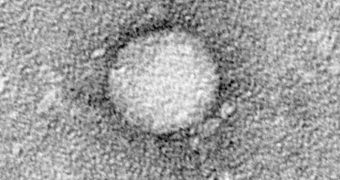In a paper detailing a long-term study, investigators were able to demonstrate that hepatitis C infection rates among injection drug users (IDU) have maintained steady over the past years, whereas a significant reduction was recorded in the number of HIV infection cases.
The investigation, which was conducted on Baltimore IDU, covered more than 20 years, and witnessed long-term trends in infection rates for both diseases. Hepatitis C virus (HCV) infections only dropped by a slight margin, despite efforts to bring them down.
One thing about HCV is that it's highly transmissible. Efforts to keep the spread of blood-borne viruses in check are apparently successful, but the new work shows that they also need to be expanded against hepatitis C as well.
What's interesting about the new investigation is that it shows past studies on the issue to be incorrect. Previously, researchers believed that HCV infection rates were decreasing substantially.
“Implementation of harm reduction strategies since the early 1990s among many IDU populations led to decreases in HIV incidence or sustained low-level HIV prevalence and incidence,” experts Jason Grebely and Gregory J. Dore, of the University of New South Wales, say in an editorial accompanying the new study.
“In contrast, the impact on HCV transmission within the same populations has been much less pronounce,” the go on to say. The investigation was carried out by an international group of experts.
The scientists were led by specialists at the Johns Hopkins School of Public Health. Details of their work are scheduled to appear in a paper that will be published in the March 1 issue of the esteemed scientific Journal of Infectious Diseases.
Needle exchange programs and substance abuse treatment, as well as other strategies that are working in reducing HIV infection rates, are apparently unsuccessful against HCV.
“Current prevention efforts delay but do not prevent HCV at the population level and will need to be further intensified to reduce risk of HCV infection to the level of HIV,” the authors of the new paper say.
Back in 1988 and 1989, some 5.5 individuals per 100 had HIV in the Baltimore IDU community. Between 2005 and 2008, that number dropped to zero. For HCV, rates declined from 22 per 100 (in 1988-1989) to 7.8 per 100, between 2005 and 2008, Science Blog reports.

 14 DAY TRIAL //
14 DAY TRIAL //